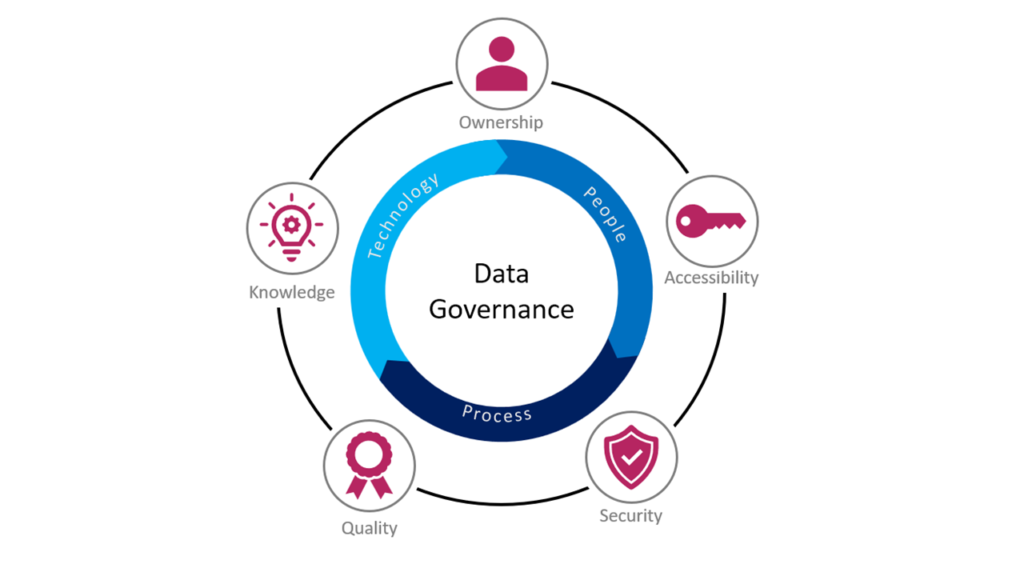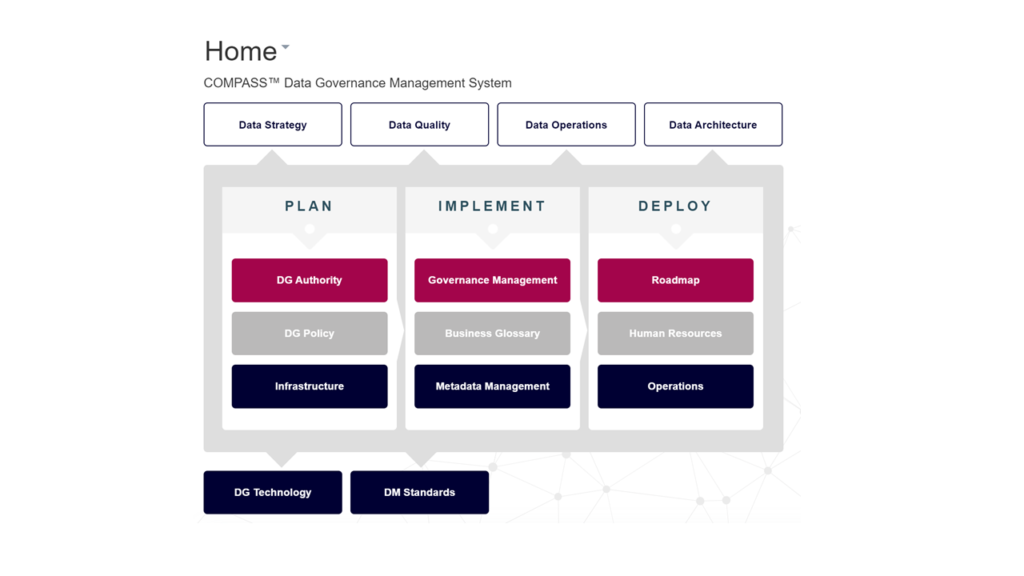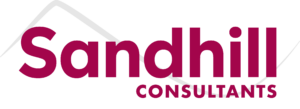When it comes to any form of governance there is always a balance to be achieved between the extremes of a governance spectrum: between totalitarian control and autonomous operation. In an uncontrolled environment individuals have complete individual autonomy but with no guiding framework. Whereas, with totalitarianism, you have a framework of complete centralized control but no individual autonomy. I don’t believe that either of these two extremes exist in governance spheres, but it’s important to understand that your enterprise is going to exist somewhere within this spectrum. The more you can make that a conscious decision, rather than an organic mistake, the better prepared you will be to address your governance needs. This applies equally to data governance that is concerned with governing data acquisition, usage, archive, disposal, processes, people, and their responsibilities.
- Unify
- The data governance polices so that an enterprise’s data and information assets are managed consistently and used properly.
- The best of the organic, autonomous, and best practice processes for decision making and issue resolution
- The assets that are subject to data governance; data architecture, metadata, business policies, business rules, and business terms to improve their quality
- Individual needs into strategic business goals and objectives
- Centralize
- The ownership, roles, and responsibilities of personnel in the governance authority and working groups
- The accessibility of the data governance assets into a shared repository
- The supporting technology that will automate the data governance processes
- Security to ensure that data is classified according to its sensitivity
- Accessibility for safeguarding information and preventing data loss and leakage thereby ensuring that data is only used for permissible uses
- Optimize – the roles and responsibilities, processes, and supporting technologies
- Embed – the DG processes, best practices, and performance monitoring as an intrinsic part of everyday activities

Figure 1: Key DG Dimensions
This is where COMPASS adds value, it is a how-to-guide set of best practices for your data governance efforts that details how enterprises can set up and deliver a performing data governance practice.

Figure 2: COMPASS Framework
It provides:
- A knowledge base content and templates in the functional areas of data governance, including policies, processes, standards, and organization
- A collection of predefined data governance roles, responsibilities, and accountabilities
- A set of predefined data governance process workflows
- Templates and examples of a roadmap, plan, and metrics for data governance deployment
Applying data governance effectively requires establishing a business data governance capability that provides for the following processes:
- Governance—processes dedicated to operationalizing and ensuring compliance with governance strategies and policies. These processes include the implementation of roles and responsibilities for governance.
- Definition—processes dedicated to the documentation of metadata, their definitions, relationships, taxonomies, dataflow, and data lifecycle.
- Measurement—processes dedicated to monitoring and measuring the value and effectiveness of governance workflows. These processes provide visibility into governance practices and ensure auditability.
The goal of COMPASS is to provide a data governance framework that is specific to your organisation that sets out clearly the data rules, organizational role delegations, and processes aimed at unifying everyone to a common understanding and operational model of your data governance practice.
Join our webinar on 26th May 2022 to see how you can successfully implement and deliver an effective operating data governance practice.
